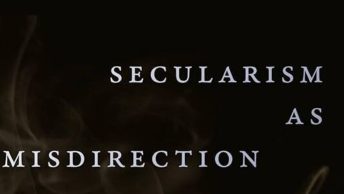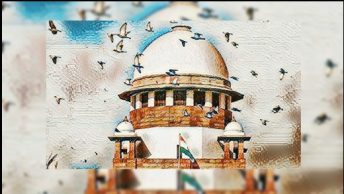[Ed Note: Please find below Prof. Tarunabh Khaitan’s quick response to the post from Krithika Ashok regarding Prof. Khaitan’s Article in the ILR titled “The Indian Supreme Court’s identity crisis: a constitutional court or a court of appeals?”. This is part of a series of posts discussing the public law themed articles featured in the recently released Issue 1 of the 2020 Volume of the Indian Law Review. You can access all the posts in this discussion here.]
I am very grateful to Ms Ashok for her thoughtful and deep engagement with my article. She is clearly emerging as one of India’s leading scholars on empirical analysis of the judiciary, and we can expect to see a lot of very exciting work coming from her. Here are a few brief responses:
1. On reversal rate: I show in the paper why it is wrong to suppose that the Priest-Klein hypothesis can apply to a discretionary appellate docket. Ms Ashok is right to point out that there is very little scholarly work on what one should expect to see in a discretionary docket, but the paper argues that logically, an apex court’s discretionary appeal docket should see higher reversal rate than 50%, and supports this with limited data from some other courts. More research is definitely needed on this score, but without that, I believe that the comparative trend of a 70% or so reversal rate in discretionary appeals is a reasonable assumption.
2. On error-correction or norm-correction: Ms Ashok is right to point out that a norm-correction court may have a lower reversal rate than an error-correction court. This will be the case when a norm-correction court decides to admit sufficiently large number of cases on appeal simply because it wants to give a different set of reasons for reaching the same outcome that the lower court reached. Having conceded this theoretical possibility, it seems to me in that in practice, even norm-correction courts are likely to admit cases with the ‘right’ outcome mainly under circumstances where lower courts disagree on their reasons (and, therefore, very possibly, the outcomes). This is mainly because courts are pragmatic problem solvers, and less likely to spend time solving legal puzzles on which very little turns in the real world. Sure, they may occasionally do so, but for them to undertake norm-correction without a practical significance so systematically that it affects their overall reversal rates seems implausible. More importantly, even if one concedes that there may well be norm-correction courts that like to solve academic puzzles for their own sake, it is amply clear that the Indian Supreme Court is not one of them. True, my quantitative research in this paper does not prove this claim—but even a cursory glance at the orders given by the SC in any representative sample of its SLP cases, especially cases in which it does not reverse the order under appeal, should suffice to show that there is not much norm-correction going on in these cases. So, while Ms Ashok does point to a theoretical possibility in defence of the SC, it is extremely improbable that any study of its SLP jurisprudence would conclude that it is in fact acting systematically as a norm-correction court in its SLP jurisprudence. This remains a conjecture, of course, and more research to establish or disprove it is obviously necessary.
3. On other possible variables: In my study, I did consider the possible impact of party type (individuals, state, corporates etc) as well as subject-matter as possible variables. Some gross statistical data on party-type did seem interesting, but I could not find any statistical significance with respect to these variables. Sure, the absence of evidence is not evidence of absence. It is possible that my sample size of 1100 cases was insufficiently large, and that an even bigger data-pool may well reveal what my data could not show. But the significance of senior advocates on my data was crystal clear. Footnote 80 of my paper attempts to give a plausible resolution for the apparent conflict between my findings and those of Dr Chandra’s paper, that Ms Ashok cites. It is possible that the court may well be applying an even lower admission standard when faced with individual litigants suing the state (Dr Chandra’s finding), and yet admit very few cases brought by such individuals (my finding) because of the relatively weaker arguments/pleadings filed by individuals. Having said that, I absolutely welcome Ms Ashok’s call for further research into the connection between admissibility rates and reversal rates.
4. On Senior Advocates: Ms Ashok agrees with (or, at least concedes) my suggestion that the Court sees the mere presence of a senior advocate, for whichever party, as a proxy for ‘high stakes’ and is therefore tempted to admit the case. However, she is wrong to think that this is in any sense a ‘good’ proxy. At least the descriptive statistics in my paper show that the reversal rate in cases that were admitted after a senior advocate’s intervention is especially low—this indicates that they are actually rather bad proxies for admission. Ms Ashok is right that under its present modus operandi, a ban on senior advocates is likely to lead the court to look for other (no doubt equally bad, or worse,) proxies. What is needed is that the court stops looking for proxies to determine admissibility altogether, and actually focus on the legal merit of the case qualitatively. And that would become humanly possible if it starts doing a lot less, moves admission for civil SLPs to written briefs alone, and ropes in judicial clerks to do some of the heavy lifting. Only a dramatic cull of its SLP docket and its approach to admissibility can make the Supreme Court a truly judicial institution.






Thank you for your sharing. I am worried that I lack creative ideas. It is your article that makes me full of hope. Thank you. But, I have a question, can you help me? https://www.binance.com/fr/register?ref=GJY4VW8W
Can you be more specific about the content of your article? After reading it, I still have some doubts. Hope you can help me.
Thanks for sharing. I read many of your blog posts, cool, your blog is very good.